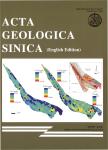Miocene Crustal Anatexis of Paleozoic Orthogneiss in the Zhada Area,Western Himalaya
Miocene Crustal Anatexis of Paleozoic Orthogneiss in the Zhada Area, Western Himalaya作者机构:College of Earth ScienceChengdu University of TechnologyChengdu 610059China MNR Key Laboratory of Metallogeny and Mineral AssessmentInstitute of Mineral ResourcesChinese Academy of Geological SciencesBeijing 100037China Institute of GeologyChinese Academy of Geological SciencesBeijing 100037China
出 版 物:《Acta Geologica Sinica(English Edition)》 (地质学报(英文版))
年 卷 期:2022年第96卷第3期
页 面:954-971页
核心收录:
学科分类:070903[理学-古生物学与地层学(含:古人类学)] 0709[理学-地质学] 07[理学] 070901[理学-矿物学、岩石学、矿床学] 0708[理学-地球物理学]
基 金:This work was supported by the National Natural Science Foundation of China(Grant Nos.42072114,41503006) the Deep Resources Exploration and Mining,the National Key R&D Program of China(Grant No.2018YFC0604106) the Chinese Geological Survey(Grant No.DD20190167) the China Scholarship Council(Grant No.201808110080).
主 题:leucogranite orthogneiss petrogenesis crustal anatexis Zhada area Himalayan orogen
摘 要:Granitic gneiss(orthogneiss)and Himalayan leucogranite are widely distributed in the Himalayan orogen,but whether or not the granitic gneiss made a contribution to the Himalayan leucogranite remains unclear.In this study,we present the petrological,geochronological and geochemical results for orthogneisses and leucogranites from the Zhada area,Western Himalayas.Zhada orthogneiss is composed mainly of quartz,plagioclase,K-feldspar,biotite and muscovite,with accessory zircon and apatite.Orthogneiss zircon cathodoluminescence(CL)images show that most grains contain a core with oscillatory zoning,which indicates an igneous origin.Sensitive high-resolution ion microprobe(SHRIMP)U-Pb dating of the zircon cores in the orthogneiss shows a weighted ^(206)Pb/^(238)U age of 515±4 Ma(early Paleozoic),with sponge-like zircon rims of 17.9±0.5 Ma(Miocene).Zhada leucogranite shows^(206)Pb/^(238)U ages ranging from 19.0±0.4 Ma to 12.4±0.2 Ma,the weighted average age being 16.2±0.4 Ma.The leucogranites have a low Ca content(1 wt%),FeOt content(1 wt%),Rb content(67.0-402 ppm),Sr content(56.6 ppm),Ba content(3.35-238 ppm)and Rb/Sr ratio(0.5-14.7),which are similar to the geochemical characteristics of the Himalayan leucogranite derived from muscovite dehydration partial melting of metasediments and representative of most Himalayan leucogranites.The highly variable Na_(2)O+K_(2)O(4.33 wt%-9.13 wt%),Al_(2)O_(3)(8.44 wt%-13.51 wt%),ΣREE(40.2-191.0 ppm),Rb(67.0-402 ppm)and Nb(8.23-26.4 ppm)contents,^(87)Sr/^(86)Sr(t)ratios(0.7445-0.8605)andεNd(t)values(−3.6 to−8.2)indicate that the leucogranite is derived from a heterogenetic source.The nonradiogenic Nd isotope values of the studied Zhada leucogranite and orthogneiss range from−8.2 to−3.6 and from−8.7 to−4.1,respectively.Therefore,the general mixing equation was used to perform the Sr and Nd isotope mixing calculations.The results indicate that the heterogenetic source was the Tethyan Himalayan Sequence(THS)/Higher Himalayan Crystalline(HHC)metasediments and Zhada orthogneiss.The Zhada area experienced crustal anatexis during the Miocene and the heterogenetic source of the orthogneiss and metasediment may have experienced crustal anatexis controlled by muscovite dehydration.The Zhada leucogranite inherited not only the geochemical characteristics of the Himalayan metasediment(muscovite dehydration melting),but also the trace elements and Sr-Nd isotopic characteristics of the Zhada orthogneiss.These results indicate that the Paleozoic Zhada orthogneiss was involved in crustal anatexis at 17.9±0.5 Ma(Miocene)and that the muscovite dehydration of the metasediments in the heterogenetic source produced fluid,which may have caused the orthogneiss solidus lines to decline,triggering a partial melting of the Zhada orthogneiss.It is therefore proposed that Himalayan leucogranite is a crust-derived granite rather than a S-type granite,as previously hypothesized.



